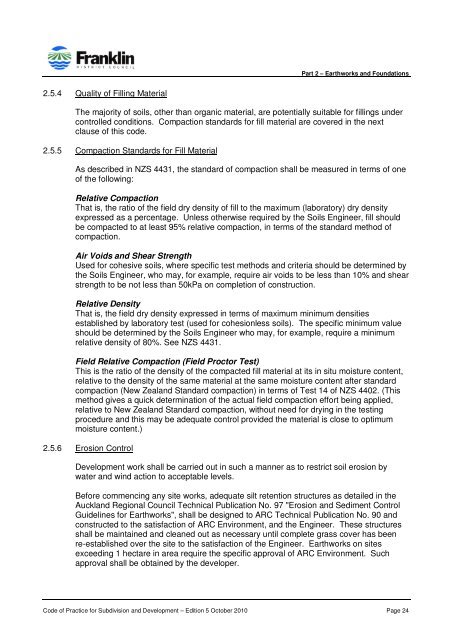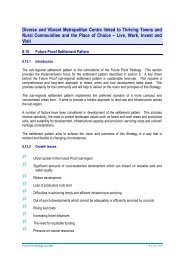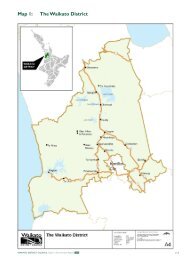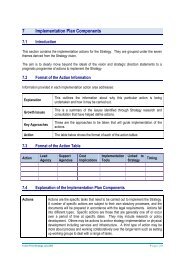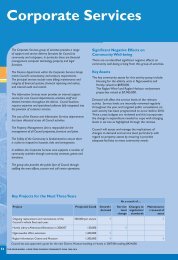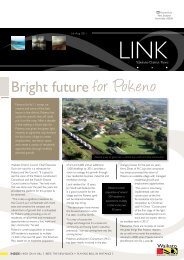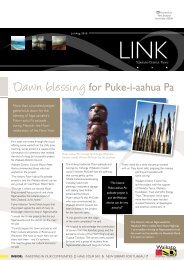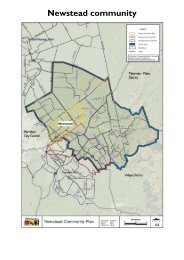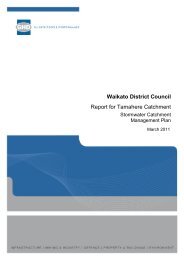CODE OF PRACTICE FOR SUBDIVISION AND DEVELOPMENT
code of practice for subdivision and development - Waikato District ...
code of practice for subdivision and development - Waikato District ...
Create successful ePaper yourself
Turn your PDF publications into a flip-book with our unique Google optimized e-Paper software.
Part 2 – Earthworks and Foundations2.5.4 Quality of Filling MaterialThe majority of soils, other than organic material, are potentially suitable for fillings undercontrolled conditions. Compaction standards for fill material are covered in the nextclause of this code.2.5.5 Compaction Standards for Fill MaterialAs described in NZS 4431, the standard of compaction shall be measured in terms of oneof the following:Relative CompactionThat is, the ratio of the field dry density of fill to the maximum (laboratory) dry densityexpressed as a percentage. Unless otherwise required by the Soils Engineer, fill shouldbe compacted to at least 95% relative compaction, in terms of the standard method ofcompaction.Air Voids and Shear StrengthUsed for cohesive soils, where specific test methods and criteria should be determined bythe Soils Engineer, who may, for example, require air voids to be less than 10% and shearstrength to be not less than 50kPa on completion of construction.Relative DensityThat is, the field dry density expressed in terms of maximum minimum densitiesestablished by laboratory test (used for cohesionless soils). The specific minimum valueshould be determined by the Soils Engineer who may, for example, require a minimumrelative density of 80%. See NZS 4431.Field Relative Compaction (Field Proctor Test)This is the ratio of the density of the compacted fill material at its in situ moisture content,relative to the density of the same material at the same moisture content after standardcompaction (New Zealand Standard compaction) in terms of Test 14 of NZS 4402. (Thismethod gives a quick determination of the actual field compaction effort being applied,relative to New Zealand Standard compaction, without need for drying in the testingprocedure and this may be adequate control provided the material is close to optimummoisture content.)2.5.6 Erosion ControlDevelopment work shall be carried out in such a manner as to restrict soil erosion bywater and wind action to acceptable levels.Before commencing any site works, adequate silt retention structures as detailed in theAuckland Regional Council Technical Publication No. 97 "Erosion and Sediment ControlGuidelines for Earthworks", shall be designed to ARC Technical Publication No. 90 andconstructed to the satisfaction of ARC Environment, and the Engineer. These structuresshall be maintained and cleaned out as necessary until complete grass cover has beenre-established over the site to the satisfaction of the Engineer. Earthworks on sitesexceeding 1 hectare in area require the specific approval of ARC Environment. Suchapproval shall be obtained by the developer.Code of Practice for Subdivision and Development – Edition 5 October 2010 Page 24


